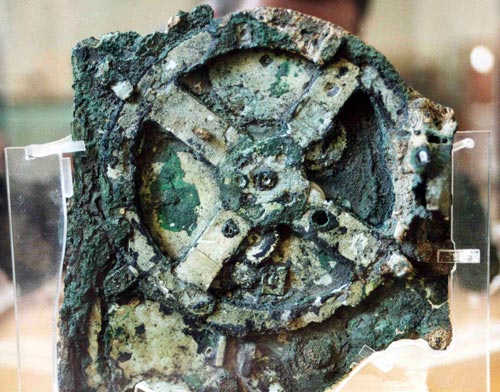About the size of a shoebox, a mysterious bronze device recovered from a Roman shipwreck in the early 20th century has puzzled scientists for many years.
Experts have now astonishingly recognized it as the oldest surviving astronomical computer in the world.
A team of Greek and British scientists has uncovered the secrets of the Antikythera mechanism and decoded ancient Greek inscriptions dating back 2,000 years.
 |
|
A fragment of the ancient computer. (Source: astro.rug) |
“We have now decoded 95% of the inscriptions, including over 1,000 characters“, said physicist Yiannis Bitsakis, a member of the archaeological team.
Discovered in 1900 from a Roman shipwreck dating back to 80 BC, near the island of Antikythera in southern Greece, the mechanism consists of over 30 gears and dials, covered with astronomical symbols.
“The device could be used to calculate the positions of the stars, at least the sun and the moon, and predict astronomical phenomena“, noted physicist Xenophon Moussas from the University of Athens. “The device is extremely rare, if not unique“.
There is a theory suggesting that the device was created at a school founded by the ancient philosopher Poseidonius on the island of Rhodes in Greece.
“Like Alexandria, Rhodes was an astronomical center at that time. The ship carrying the device may have been part of Julius Caesar’s escort to Rome, bringing wealth taken from the island“.


















































